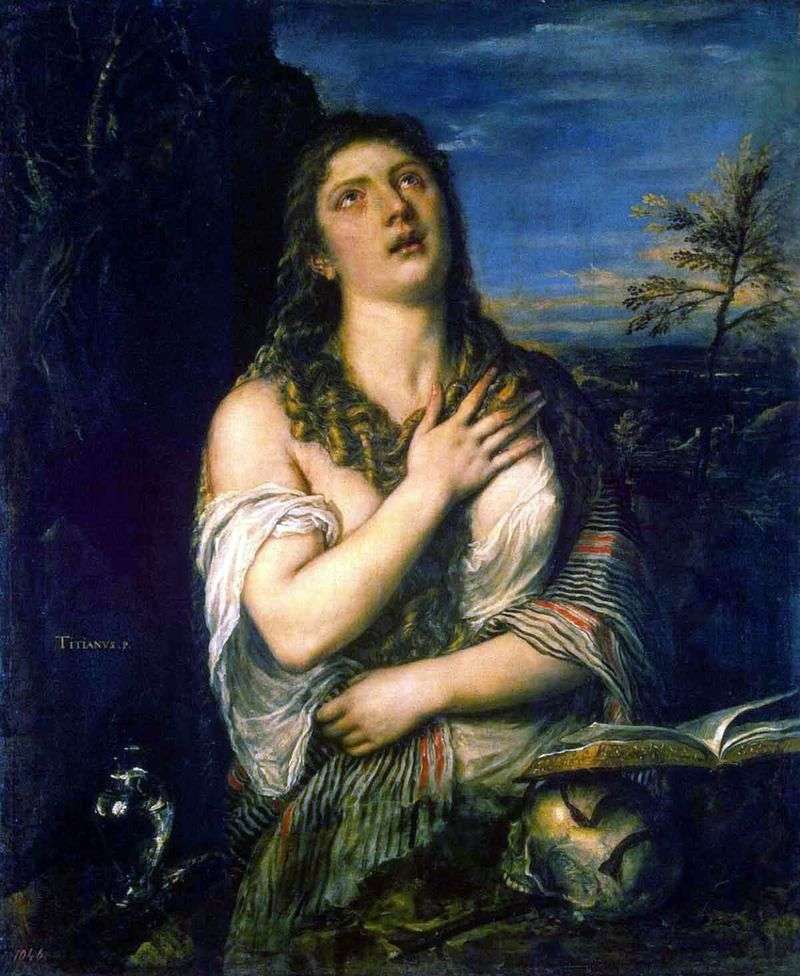
Painting by artist Tiziano Vecellio “Penitent Mary Magdalene”. The size of the picture is 119 x 98 cm, canvas, oil. Consistently and with great pictorial power, the late Titian’s aesthetic views of life find expression in his “Penitent Magdalene,” one of the masterpieces of the Hermitage collection.
This picture is written on a plot, very characteristic for the era of the counter-reformation. In fact, in this picture, Titian once again affirms the humanistic and “pagan” basis of his work. A great realist, resolutely rethinking the religious-mystical plot, creates a work that is openly hostile to the reactionary mystical line in the development of Italian late Renaissance culture. For Titian, the meaning of the picture is not in the pathos of Christian repentance, not in the sweet languor of religious ecstasy, and even less in the affirmation of the frailty of the flesh, from the “dungeon” of which the “disembodied soul” of man strives for God.
In “Magdalene” the skull is a mystical symbol of the decay of the whole earthly – for Titian only an accessory imposed by the canons of the plot, so he treats him quite unceremoniously, turning it into a stand for a full book. Almost emotionally, the artist paints the figure of Magdalena, her beautiful thick hair, her breathless tender breast.
Passionate look is full of earthly, human grief. Titian resorts to a smear that transmits irreproachably accurate real color and light ratios. Restless, tense color chords, dramatic flickering of light and shadows, dynamic texture, the absence of isolating the volume of rigid contours with the plastic definiteness of the form as a whole create an image full of inner movement. The hair does not lie, but it falls off, the chest breathes, the hand is given in motion, the folds of the dress are agitatedly swaying. The light flickers gently in the lush hair, is reflected in the eyes that are wet with moisture, refracts in the glass of the vial, fights with thick shadows, confidently and juicy molds the body shape, the entire spatial environment of the picture.
The exact image of reality is combined with the transmission of her eternal movement, with her vivid imagery-emotional characteristics. But what is the result of the image created with such a picturesque power? The artist admires Magdalina: a person is beautiful, his feelings are bright and significant. But he suffers. The former clear and serene happiness was irrevocably broken.
The environment surrounding the person, the world as a whole – is no longer that quiet background, submissive to the person we saw it before. On the landscape stretching behind the Magdalene, dark shadows come in, the sky is clouded with thunderclouds, and in the dim light of the last rays of the dying day, the image of a grief-stricken person appears.
